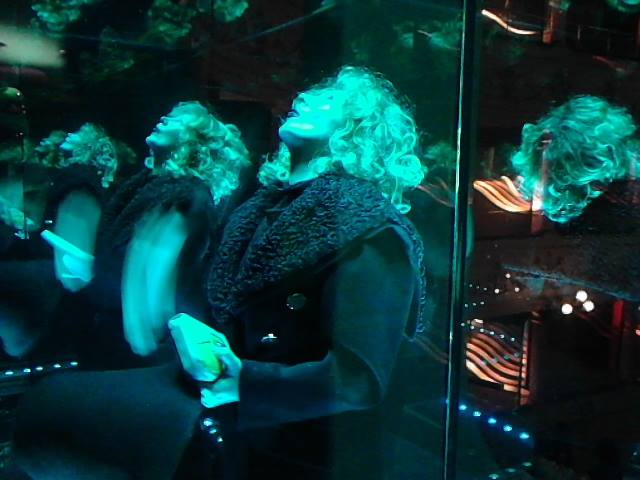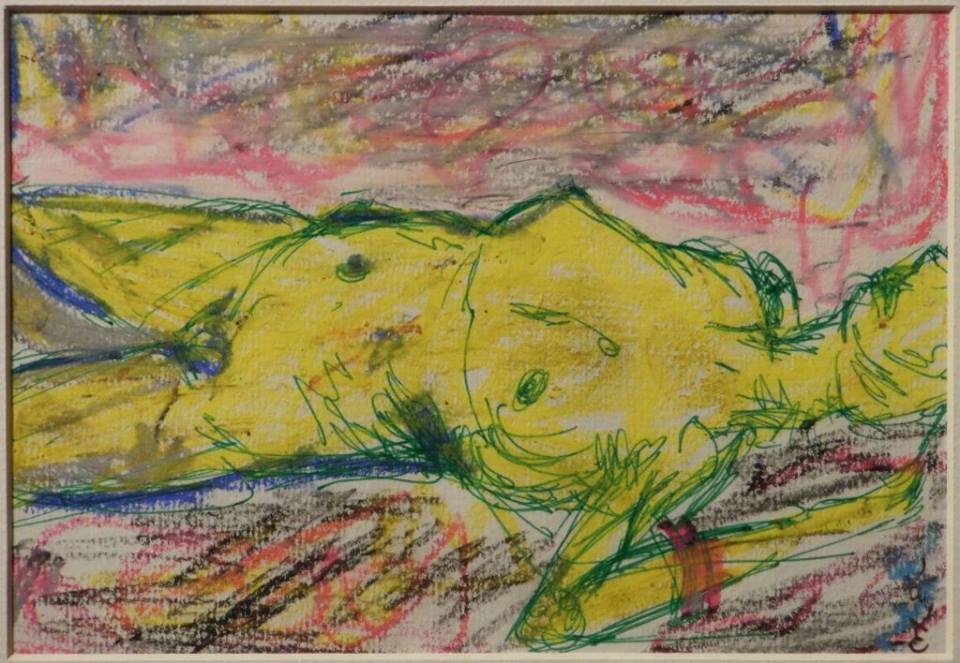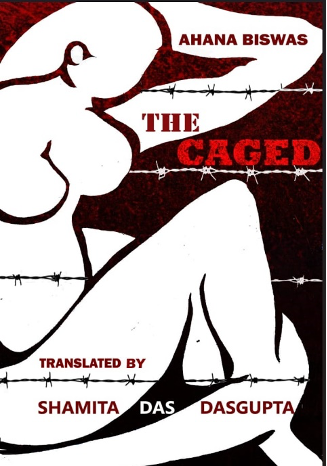Pictures from the photo gallery are from “Delivering Obsolescence: Art Bank, Data Bank, Food Bank” curated by Camilla Boemio, Special Project at 5th Odessa Biennale of Contemporary Art, 2017, photographs: Christopher Pugmire.
APHASIA OF DOUBT: THE UNKNOWABLE REALITY – Camilla Boemio
1.
What is the meaning of turbulence today? Can we assemble different artistic practices, different languages from distinct bodies of artwork in order to perform a global vision of socio political crisis?
We are in a programmed obsolescence state: the ultimate weapon of consumerism. A predatory economy, in which Serge Lautoche’s famous words echo a perpetual question: Where are we going?
The state of turmoil and aphasia we have reached today has opened up a very eclectic visual vocabulary. This may be helpful in investigating the potential for re-visioning the social function of the work of art, and augurs well for its renewal.
To quote Giorgio Agamben, “In the Age of Barbarism, the author is assigned the task of saying that the capacity for expression may be worn out; thus, it is the author’s task to give the word back to language.” The artist’s language can – and should – trigger an eclectic visual vocabulary where doubt can be raised, debate stimulated and uncomfortable questions asked. This requires going back to the threshold separating logic from ontology, language from being. The artist must place him/herself on the other side of the split that generated the history of metaphysics.
Over the years, Giorgio Agamben’s insight has developed into a crystalline archaeological method providing prolific indications for a possible language. From Michel Foucault to Enzo Melandri, philosophical archeology, displayed in Signatura rerum, engages us in the infinite search for the connection between theory and practice.
The language of art assembled into philosophical archeology becomes a vision of the archeology of art in the age of barbarism, thus establishing a permanent practice.
2.
In this constant turmoil, the fragments of becoming create an atlas of references. This provides the impetus for the exhibition Delivering Obsolescence: Art Bank, Data Bank, Food Bank, a collective show that takes its name from an in-progress installation created last year in Villa Caprile, in collaboration with the artist David Goldenberg. This was the method and practice we offered at the Odessa Biennale.
The exhibition explores the vision, interpretation and concept of history as both a singular and plural story, an epiphanous dialogue between two artists, David Goldenberg and Fabio Lattanzi Antinori, who use very different languages and interpretive codes. It is a breakthrough perspective that focuses on how we look at things and how things look at us, in dialogic relation. The idea is to create an imaginary archaeological museum of the present containing finds, fragments, and references of a palimpsest combining languages, attitudes, and heterogeneous trajectories from a transitional, ever shifting geo-political reality. It is an environment suspended in an indefinite temporality, with works lending themselves to very open-ended interpretations, as they do not aspire to convey a single, precise message. They are visual devices feeding a constant cross-reference between them, lending themselves to being reinterpreted according to a broad spectrum of codes. These works show signs of suspended trauma that must be reconstructed by retracing and assembling the various details, references and cross references, on both the symbolic and tactile planes.
Goldenberg’s Installation extends the concept of Delivering Obsolescence into different stages. Part 1 groups together 4 elements modulating a narration composed of complementary phases. The elements are: found domestic equipment and utensils, a press release for a fictitious exhibition, some texts written on plastic carrier bags and on drawings. The clustering of these elements inside the museum’s space creates an ambiguous setting altering temporal stages, and channeling them into an archeological storage space for the display of contemporary cultural artifacts. Part 2 of the installation uses the material to generate activities looking at reimagining the space art occupies. Together, these materials perform a series of negations.
Although installation is one of the mainstays of British artist David Goldenberg, language and text form the basis of his individual works and sometimes of entire exhibitions, using language both as a fragment and an act. Something similar to a speech act, hence not only a statement, but also something with a performative function.
His exhibition at the 5th Odessa Biennale is about writing, words, art language and practice, but at the same time about installation and representation. Installation becomes a modus operandi to analyze the conditions of today’s art, its saturation, the commodified use of artistic practice to the detriment of research experimental modes.
David Goldenberg’s installation activates a sophisticated process of linguistic elaboration where the installation’s itinerary is made of “material archeology”. References include political metaphors that evoke the reappearance of violence, the recycling of existing forms or the problem of national identity and the capitalist system.
His artistic practice becomes a kind of machination whose complex nature is partly secret and must be exposed and interpreted in the correlations created between the various materials and conceptual transitions. Audiences are assigned the task of going inside an elaborate device where they must find the bundle, in order to understand and follow its radical narrative. Viewers are assisted, but are also expected to figure out the enigma on their own. Goldenberg’s ability to distort, modify and subdivide the immense field of existing forms generates areas of intellectual and emotional intensity, precise references to specific artistic practices in which his experimental approach is based. The same is true for the semantic forms in which he extrapolates fields of discussion and “excursions” that move from space to the written page. Goldenberg uses different materials in this practice, and is very flexible in the forms that he applies to his eclectic visual vocabulary.
The narration in the exhibition space opens up an intentional rift, raising questions about the eschatological, messianic nature of the economy or the quest for it.
3.
While waiting for a radical change in society, the scene evolves with the works of Fabio Lattanzi Antinori. The sound and video are designed in such a way as to break up into two stages.
The work of Fabio Lattanzi Antinori, celebrates the fragile existence of mass data archives. Drawing from daily-trading figures, financial flash-crash algorithm records, news-websites, search engines results, dark pools operations and E-bay cheapest sales descriptions, Antinori manipulates them into stories of collapsed financial empires. Like the narrator of a Greek tragedy, his hand flickering on an imaginary harp as he plays the soundtrack of the predetermined collapse, transforming stock values and data entries into angelic voices who sing the chorus of inevitable catastrophe.
The first installation consists of an audio work targeting a letter by Prime Minister Theresa and combining it with news headlines about migrants, taken from online news sources. Originally it was a video featuring a poem, but it was turned into a sound installation especially for the Biennale, and given the title United UK.
The second work is Belvedere, a video installation made with abstract visual compositions from micro flash crash transactions recorded on the international financial markets.
Politics and economics are great consumers of symbols, taboos and myths. Finance and belief systems are built on rules resembling Pindaric flights of fancy to begin with, so now they have become even more enigmatic.
To move within this scenario, Lattanzi Antinori recounts this aspect of religious faith in economics. The emphatic singing of the shares aims to ironically mimic the blind faith that our society has come to place on data, numbers and the importance of financial markets. Market decisions play such a vital role for the global economy and have daily impact. The erratic and unpredictable singing contained in the installation is also a visualization of how financial markets work with their turmoil-driven dance of trust and faith.
Consciences become a means for measuring a new geo-political order in a no-holds-barred turbulence where economic cycles govern political decisions. In this vortex, the media create a steady stream of induced fear by creating a constant barrage of sounds and images – conflicting fragments of an analysis of the individual and collective memory.
We are at the stage of no return. What is at stake is the possibility of transforming society from a place where the radical aspect of art is neutralized to a place of actual abundance, where roles, the grinding and restraining devices can be questioned, and art can be transformed into a stronghold of resistance, allowing us to embed the future into the present.

Camilla Boemio is a writer, curator and theorist whose practice deals with investigating the politics of participation in curatorial practices, and contemporary aesthetics. Boemio co-founded with Fabrizio Orsini, and directed the thematic AAC platform in Rome, she is member of AICA International Association of Arts Critics.
In 2016 she was curator of Diminished Capacity the first Nigerian Pavilion at 15th International Architecture Exhibition La Biennale of Venice. She took part to The Social, at 4th International Association for Visual Culture Biennial Conference to be held at Boston University. She was Deputy Curator of Portable Nation the Maldives Pavilion at 55th International Art Exhibition of La Biennale of Venice.
Boemio has written and edited books; contributed essays and reviews to other books, journals, magazines and websites; given public lectures, talks and conference papers.


























































